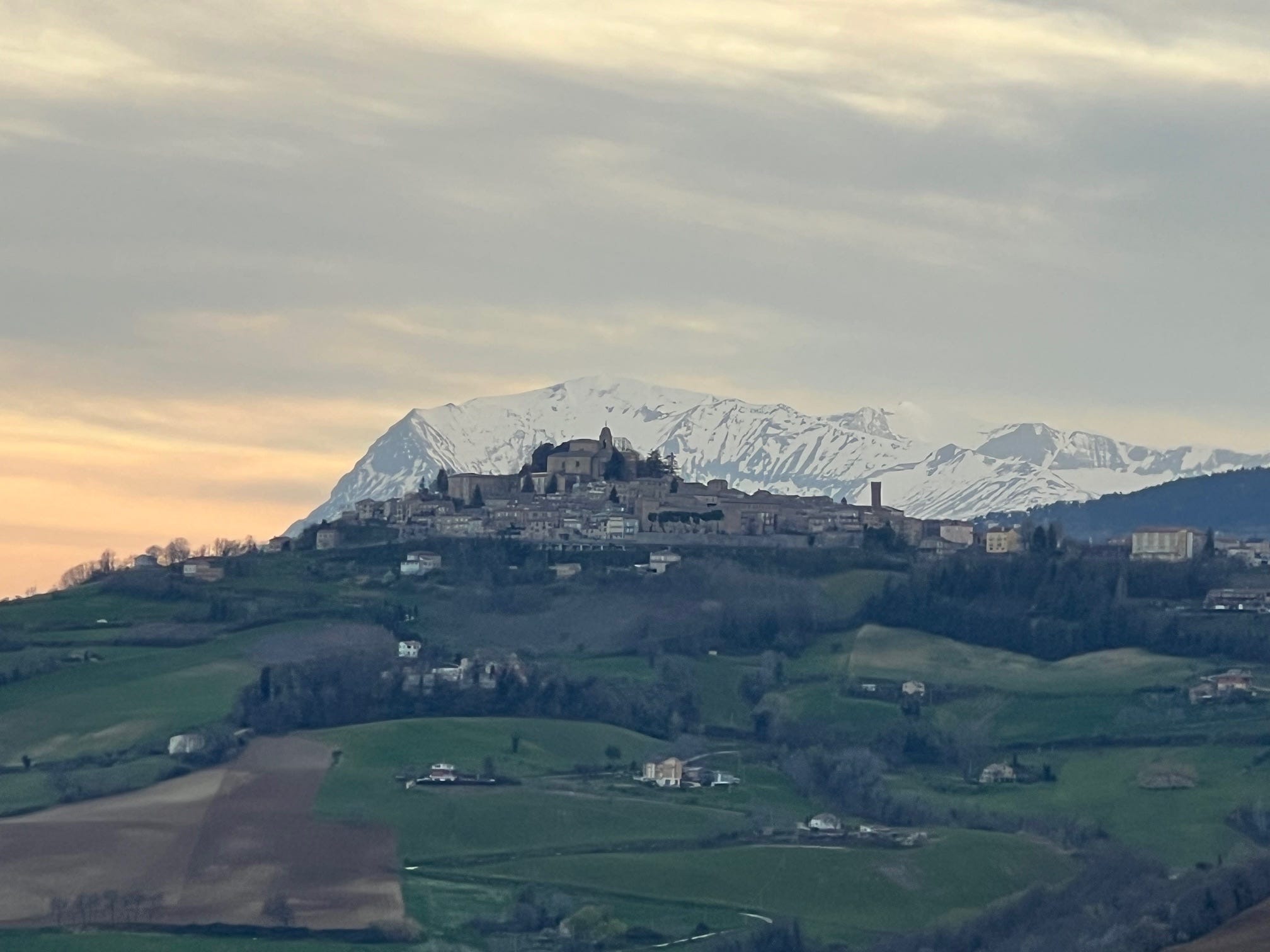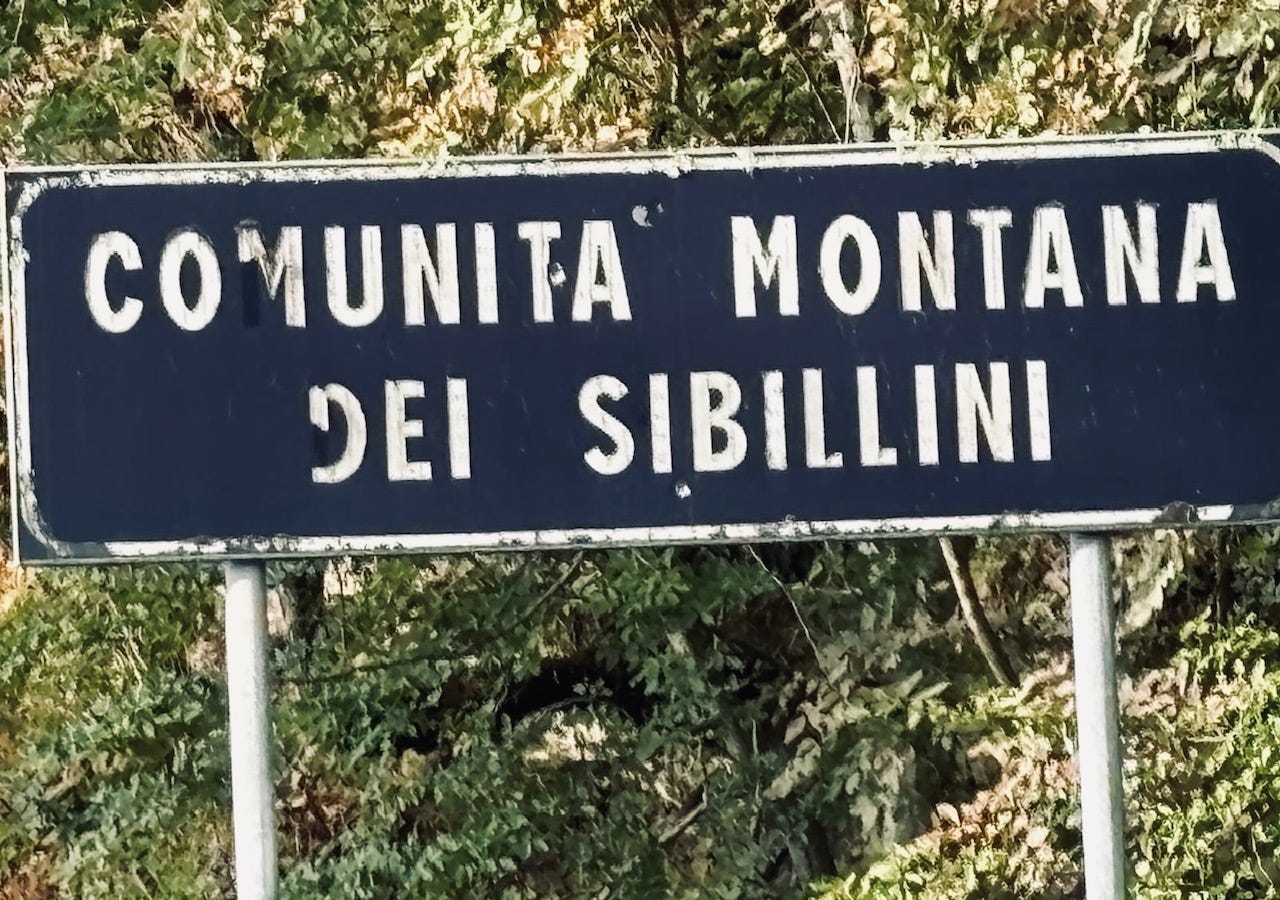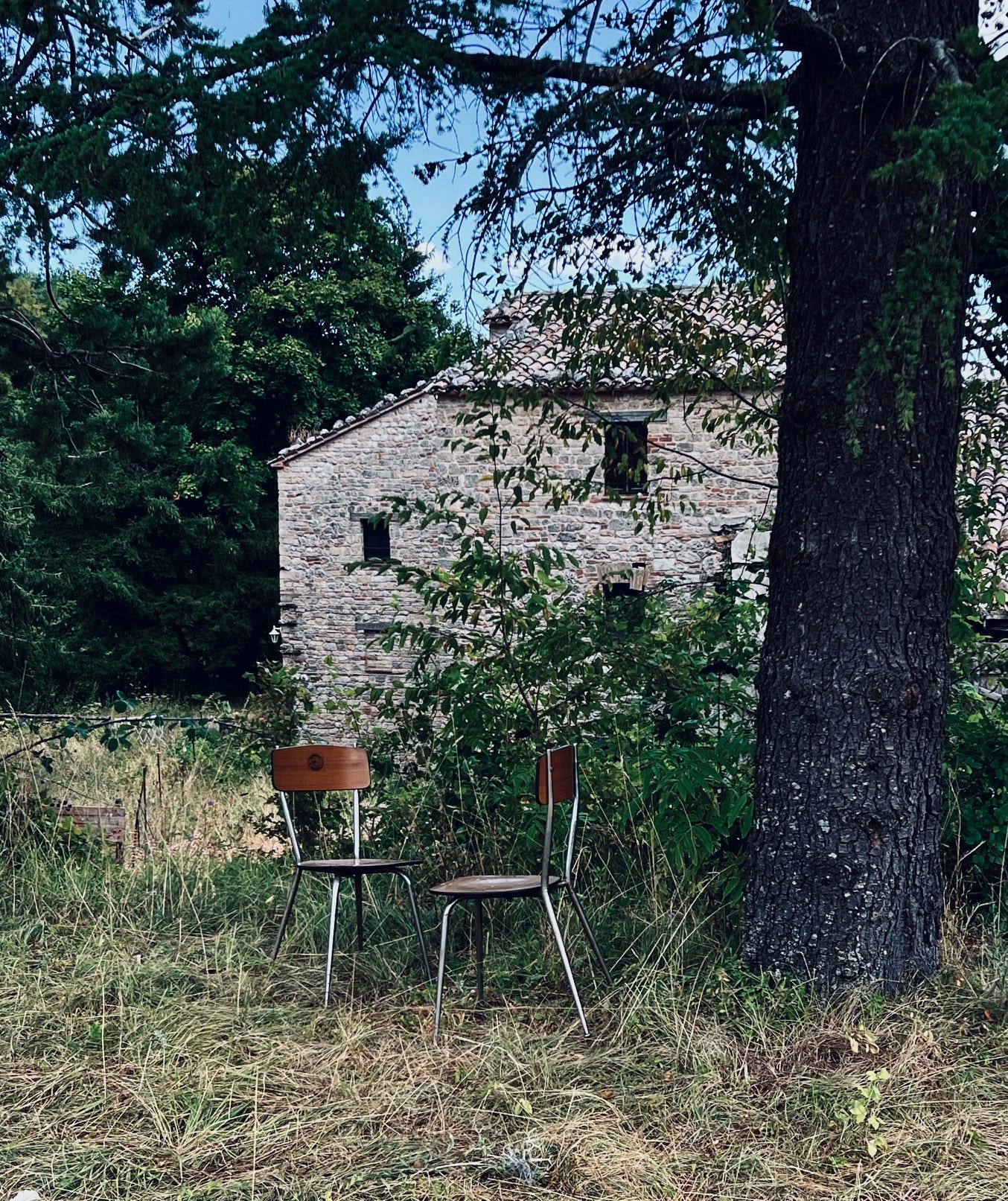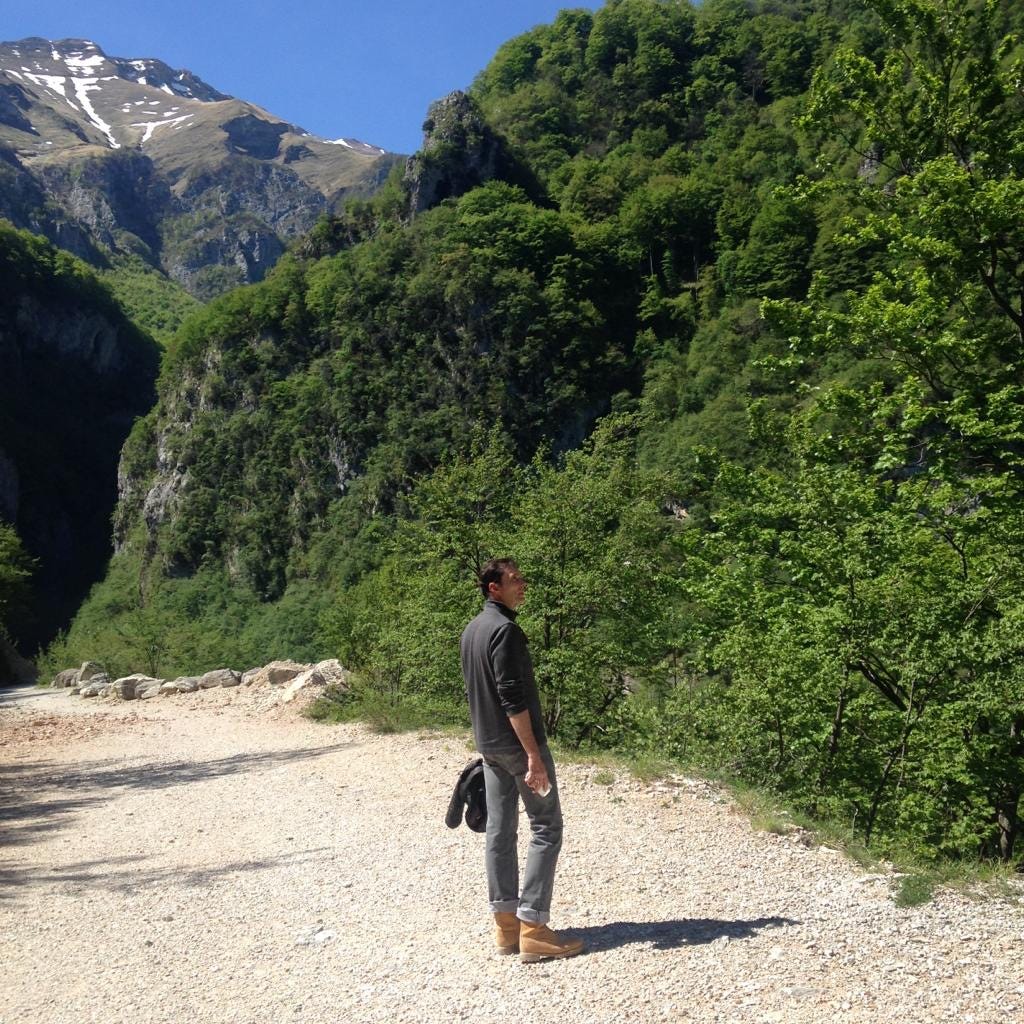Anna Maria di Moro carried with her a misery heavier even than the overstuffed backpack always strapped behind her broad but bent shoulders. She was a big woman, but a broken one. We often saw her around the town, inevitably wearing the same floor length, shapeless smock, covered with a faded floral pattern that held all the cheerfulness of flowers at a funeral.
Anna Maria owned a shop across the street from the bar where we often took our morning coffee, but her store was seldom open. One day, C & I were surprised to see the lights on and stopped in, searching for a last-minute gift. After she dusted off the merchandise, we were able to find a suitable bracelet for our friend and bought it. Ever since, Anna Maria had made a point to approach whenever she saw us at the bar.
That morning as usual, she trudged over to greet us and, according to our ritual, we dutifully inquired as to how she’d been. That prompted a long incantation of ailments, followed by an equally exhaustive recital of home-cures she had concocted: herbal teas and juices made with unusual berries that could only be found at one particular farm stand on market day.
Customarily, she would follow that dissertation by bluntly asking when we were leaving. But that day, she decided to dig a little deeper.
“What will you do while you’re here?” she asked. C and I hadn’t made plans—all we could do was mumble about work in the garden and some business at the bank. Then I mentioned that one day we planned to go for a hike in the Sibillini mountains, which are 30 minutes from the town where we have our home.
Anna Maria’s eyes widened like saucers on a face as round and pallid as a dinner plate.
“Dove andate?” she asked. “Where will you go?” When we explained that we hadn’t yet mapped a route, she interrupted with what sounded more like a prediction than a suggestion.
“You will come to my house—at Castelluccio. Do you know the place?” We had driven through it once, but there didn't seem to be much to know. “I can show you the lake. It’s very famous. Il Lago di Pilate. And Sibilla’s cave. It’s from there that the mountains take their name.”
“È bello, “she assured us. “But dangerous”.
The locals had always told us that Anna Maria lived in the village near the bar in an apartment that she once shared with her twin sister. But the sister had died in a freak accident more than a decade ago. No one had ever mentioned a house in Castelluccio, an almost empty medieval borgo buried in the shadowed forest just outside the Umbrian town of Norcia.
In any case, the idea of following a morose older woman with bad knees and a bulky backpack down a dangerous mountain path to a lake sounded like a dubious proposition. Apparently, I didn’t hide my misgivings sufficiently, as she soon set about tempting us.
“It’s a place of fantasmi. Spirits.” she declared. “Evil ones?” I asked leadingly. She narrowed her gaze and stared at me gravely. “Molto,” she intoned.
Having a general aversion to Italian conspiracy theories, whether it’s the Freemasons or communist revolutionaries in Bologna or mountain ghosts, I admit I missed the details of the story that followed. But as soon as I heard mention of ghosts, I knew C would be paying attention.
As Anna Maria rattled on about a forest where Sibilla, an ancient Roman goddess, lives in a cave behind a locked metal door, I fixated on a strange detail. On a day when the sun was shining in a cloudless sky, Anna Maria’s hulking backpack was soaking wet. I could hear it dripping behind her.
Even when she was warning us with an almost vengeful bitterness that Sibilla would sometimes swing open the heavy door of her cave to unleash horrific violence upon the world, all I could concentrate on was the drip…drip.. drip.
It was only when she dropped an instantly recognizable name that I was lured back into her story.
“Wait”, I interjected. “You mean Pontius Pilate? From the time of Christ?”
“Bravo,” she responded. By now she’d pulled a chair over to our table. According to the folklore, some years after ordering the crucifixion of Jesus of Nazareth, Pilate—the Roman governor of Judea—was assassinated in Rome and his body was to be brought over the mountains to his birthplace in Abruzzo. But along the way, the cart tumbled down the side of a ravine, plunging the driver, horses and Pilate’s corpse into the lake. Now, every summer, the Lago di Pilate turns a deep, blood-red.
“Because of his body?” I asked.
Anna Maria almost smiled. The experts blame the “crostacei”, she admitted—microscopic crustaceans that live in the waters. “When they make the babies,” she scoffed.
“But many people have seen there the ghost of Pilate. Every morning, he washes his hands in the lake. Now the waters are filled with evil power. That’s why the witches come.”
Even C was having trouble buying into this one. “There are witches?’’, she asked. “In Castelluccio?”
“Tanti, “ Anna-Maria confirmed. “From all over the world.” Apparently, in the 1600’s there were so many visitors coming to practice witchcraft that Norcia built a gallows and hung a necromancer every year to discourage their strange practices.
“When we were young, my sister and I visited the gallows many times. But it was all lost in the terramoto,” she said, referring to the 2016 earthquake that reduced the thousand year old town of Norcia and much of the surrounding area to a pile of stones.
“Have you seen the witches?” C asked, a little too eagerly. “Where do they live?”
Anna-Maria raised her eyebrows in exaggerated surprise. Of course she had seen the witches. After all, her house is near the lake. They come to dip their magic books in the spirit-saturated waters, she told us.
Some live in the grotto of the goddess Sibilla, behind the great metal door. Others move freely in the world. And though they try to hide them under their long dresses, many have the legs and the cloven hooves of goats.
“Probably excellent mountain climbers,” I observed.
Anna Maria di Moro said nothing. She just slowly lifted herself out of the chair, her knees creaking audibly. “We go there now?” she asked. “I can drive us”.
C and I tried not to visibly recoil. We thanked her and assured her that it would be a pleasure to visit her home, but today was not possible for us.
“Domani then,” she said and turned to leave. “We meet here tomorrow morning.” For the first time since we’d known her, she looked nearly happy. On her way out, she added:
“You will meet my sister. We are twins”.
As the door swung shut behind her, I noticed something on the floor: a trail of drips that led to a puddle under the chair where Anna Maria, with her soggy book-bag, had been sitting.
On the cold, white marble floor of the bar, the puddle almost glistened in the morning sun. It was a deep, luminous, unmistakeable crimson red.
Happy Halloween a tutti!










Very well done, I loved it :)
That was fun! What a read!